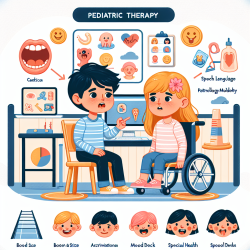Introduction
In the field of speech-language pathology, understanding the underlying biological mechanisms that can affect neurodevelopment is crucial. Recent research, such as the study by Geier et al. (2009), has highlighted the potential impact of thimerosal, a mercury-containing compound, on human neuronal and fetal cells. This blog aims to provide practitioners with insights from this study to enhance their practice and encourage further research.
Key Findings
The study investigated the effects of thimerosal and other metal compounds on human neuronal (neuroblastoma and astrocytoma) and fetal cells. The results were significant, indicating that even low-level exposure to thimerosal can lead to:
- Mitochondrial dysfunction
- Reduced oxidative-reduction activity
- Cellular degeneration and death
These effects were observed in a concentration- and time-dependent manner, with thimerosal proving to be more toxic than other tested metal compounds, such as aluminum sulfate and lead acetate.
Implications for Practice
For practitioners working with children, especially those with neurodevelopmental disorders, these findings underscore the importance of understanding environmental factors that could exacerbate or contribute to such conditions. The study suggests that thimerosal-induced cytotoxicity mirrors pathophysiological findings in patients with autism spectrum disorders (ASDs).
Practitioners should consider these insights when evaluating environmental exposures in their patients and remain informed about ongoing research in this area. Additionally, this study highlights the need for further research into the mechanisms of thimerosal-induced damage and potential co-exposures that might influence its toxicity.
Encouraging Further Research
While this study provides a foundational understanding of thimerosal's impact on cellular health, it also opens the door for further exploration. Future studies could focus on:
- Identifying additional mechanisms of thimerosal-induced cellular damage
- Evaluating the effects of co-exposures with other environmental toxins
- Exploring protective strategies to mitigate thimerosal's impact
By advancing our knowledge in these areas, we can better protect and support the neurodevelopmental health of children.
Conclusion
The study by Geier et al. provides compelling evidence of thimerosal's potential harm to neuronal and fetal cells, emphasizing the need for careful consideration of environmental exposures in clinical practice. By integrating these findings into their work, practitioners can contribute to better outcomes for children with neurodevelopmental challenges.
To read the original research paper, please follow this link: Mitochondrial dysfunction, impaired oxidative-reduction activity, degeneration, and death in human neuronal and fetal cells induced by low-level exposure to thimerosal and other metal compounds.










